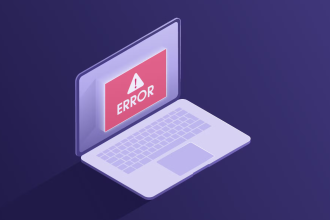Immersive technologies are responsible for creating distinct experiences by merging the simulated or digital reality with the physical world. It is taking the world by storm, and almost every big and small company is slowly incorporating immersive technologies into their system. Nowadays, immersive technologies are widely used in several industries; in education, the online casino, healthcare, entertainment, events, defense, automation, construction and engineering, architecture, retail, manufacturing, and more. In fact, advancements in virtual reality are also helping the oncology sector.
Types of Immersive Technology
The two principal types of immersive technologies are Virtual Reality and Augmented reality.
Virtual Reality
The non-immersive VR only stimulates a subset of the user’s senses. That is precisely why the user remains very much alert about the physical reality while using the VR. When it comes to semi-immersive VR, it stimulates more senses compared to non-immersive VR, but it still doesn’t cloud all of them. One example of semi-immersive VR is flight simulation, in which pilots get a taste of real-life flying because of its realistic displays. Lastly, we have the fully-immersive VRs, which are responsible for stimulating all the senses. They totally cloud all the senses and make the user move in a virtual world. VRs are widely used in several games, online casinos, etc.
Augmented Reality
There are mainly four types of ARs – Marker-based, Markerless, Projection-based, and Superimposition. Visual markers like QR codes, etc., are used in marker-based AR to produce a result. When it comes to markerless ARs, they use an accelerometer, velocity meter, or a digital compass for providing data. Projection-based ARs are characterized by artificial light projection on the surfaces. When it comes to superposition AR, the original view of an object is almost completely replaced with a new one.
Here are five things that you need to keep in mind about immersive technology:
Use of Immersive Technologies in Employee Training
For every business organization, one of the most vital steps is training the employees. It is the step that decides the success journey of your business. No matter how good your business plan is, it is bound to crumble if your employees are not appropriately trained. Your employees are the ones who will carry your business forward. So, it is very important that they have a clear understanding of the goals and visions of your organization. If they are well aware of those, only then can they work accordingly and take your company to the desired heights. So, incorporating immersive technologies in staff training is a great idea to ensure fast and effective training of the employees. It not only reduces the overall training time by 25%, but it also boosts the knowledge retention rate of the staff by 75%. The top sectors using immersive technologies for employee training are –
- The Manufacturing and the Automation Industry
- The Education Industry
- The Healthcare Industry
- The Gaming Industry
Use of Immersive Technologies in the Recruitment Process
Apart from entertainment purposes, immersive technologies like AR and VR can also be used in the recruitment processes. That is exactly why 78% of the companies use immersive technologies as recruitment tools. Even the British Army did a collaboration with a renowned AR/VR company and successfully increased military training awareness by 20%.
Improving the Productivity Using Immersive Technologies
Business productivity can be increased by 70% using immersive technologies. Several companies and businesses trust immersive technologies and their applications. According to statistics, 66% of global enterprises will rely on immersive technologies and their applications to enhance their productivity.
Product Design and Development Using Immersive Technologies
“Research and Development” is not an unknown term to any of us. It is now a billion-dollar investment sector. So, what is the best way to invest in this sector? The top industries invest in the Research and Development sector. According to the statistics, 26% of the investment is made in Immersive Technology Services.
Creating Stronger Connections with the Consumers
When it comes to business, the customer is the king. Almost 75% of companies are either using immersive technology or are outsourcing Immersive Technology Services. It eases out the entire consumer service process. The various advanced features of immersive technologies are capable of evoking an emotional response from the consumers. This, in turn, serves as a helping hand in strengthening the bond between an organization and its clients.
Conclusion
Let’s hope this article was successful in giving you a comprehensive overview of immersive technologies and all the latest updates in this sector.














